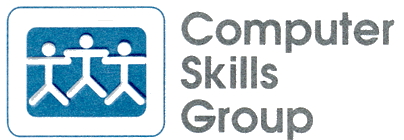

This tip is not about something you use every day. Hopefully, you will only need to do this very infrequently. For many people, the first time they see safe mode is when Windows activates it for them.
Safe mode looks like your whole machine has been clobbered (technical term). It hasn't, but this bulletin will help you understand what's happening.
What is safe mode and why is it needed?
Windows has become increasingly complex. When Windows experiences a problem, its complexity makes diagnosing the problem very difficult. The golden rule of troubleshooting is to simplify the environment, thus narrowing down the possible causes. Microsoft recognized this need and included "safe mode" in Windows as a way to do that. When you boot Windows in safe mode, only the most essential features of Windows are loaded. It's the bare minimum that Windows can operate with. You will know it when you see it because fancy screen images are eliminated. Your wallpaper picture might disappear. Screen saver doesn't work. Only 16 colors are allowed and only the default screen size is allowed (640 x 480). In layman's terms, your screen look awful! To be sure that you don't totally freak out when this happens, Windows does display the words "Safe Mode" on the screen. Your printer won't work either. Since it's not essential, safe mode doesn't even load the print driver, so Windows can't even tell you have a printer.
So why might you want to be in safe mode?
Have you ever had difficulty running scan disk or the defragmenter program? Those program are designed to run alone, with no other programs running. If another program or process is running, or if one starts up while scan disk or defrag is running, those programs are likely to reset themselves and start over again. If this continues to happen, scan disk and defrag will never finish running. It's a common problem. To avoid this, Microsoft suggests that you boot into safe mode and then run the program. As you learned above, safe mode never loads the screen saver. It also never loads some of the hidden processes (programs) that are initiated during boot. Booting in safe mode often lets scan disk and defrag run as intended.
How do you tell it to boot in safe mode?
You need to shutdown the system to start the process. A restart will work but you may find it easier if you do a full shutdown. Booting into safe mode involves hitting the F8 key at just the right time during the initial part of the boot cycle. No one can tell you what the right time is, so . . . there's a trick. As soon as you power up the computer, start banging on the F8 key. You'll end up hitting it 20 or 30 times but eventually it brings up a screen which lets you boot several different ways. Select "Safe Mode" and hit enter. That should do it. If it boots into normal Windows, you missed that magic moment! Just shutdown and do it again.
Can I try this out without hurting anything?
Yes. Just shut down and reboot when you're done seeing what it all looks like.
When else might I want to try safe mode?
If your system is locking up or crashing, you might try running a while in safe mode. If the behavior stops, a video or print driver may be the culpret. You get the idea. It's a tool worth knowing about.
Now, try booting into safe mode so you won't panic if it ever pops up on its own. If nothing else, it's a good trick to impress people with!